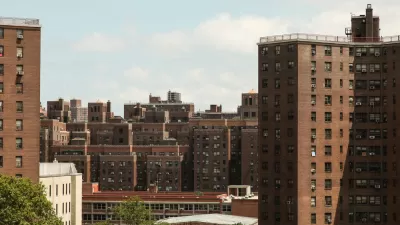The cost of housing affects millions across the country, but the issue has been conspicuously absent in the campaigns. Hillary Clinton's plan includes an imprecise remedy, while Donald Trump's pronouncements have been vaguer still.

Daniel J. McGraw laments the lack of attention given to affordable housing during this year's boisterous presidential campaigning. He notes, with some understatement, "this election has become more about the personalities of the candidates and the latest campaign gaffes than any real discussion of important issues."
And the issue is important, as most of us are acutely aware. "According to a Harvard report this year, 11.4 million households pay more than half their income for housing, and the number of those who spend more than 30 percent of their income on housing has reached 21.3 million."
Moreover, according to Angela Boyd, managing director of the Make Room campaign, "About 90 percent of the rental housing market being built right now is for luxury, and a whole segment of the population is being overlooked."
Both candidates have addressed the issue to a certain extent. And, no surprise, Hillary Clinton's plan has a bit more meat to it. "Democratic presidential candidate Hillary Clinton's plan would try to lift more families into sustainable homeownership through a $25 billion housing investment program that would include low-income housing tax credits and down payment assistance."
Meanwhile, Donald Trump maintains that lowering taxes will spur growth extending to the housing market. "Trump has yet to lay out a full plan with specifics, such as how to reduce spending to pay for the income tax decreases."
FULL STORY: Affordable Housing Gets 2016 Presidential Election Bump

Maui's Vacation Rental Debate Turns Ugly
Verbal attacks, misinformation campaigns and fistfights plague a high-stakes debate to convert thousands of vacation rentals into long-term housing.

Planetizen Federal Action Tracker
A weekly monitor of how Trump’s orders and actions are impacting planners and planning in America.

San Francisco Suspends Traffic Calming Amidst Record Deaths
Citing “a challenging fiscal landscape,” the city will cease the program on the heels of 42 traffic deaths, including 24 pedestrians.

Defunct Pittsburgh Power Plant to Become Residential Tower
A decommissioned steam heat plant will be redeveloped into almost 100 affordable housing units.

Trump Prompts Restructuring of Transportation Research Board in “Unprecedented Overreach”
The TRB has eliminated more than half of its committees including those focused on climate, equity, and cities.

Amtrak Rolls Out New Orleans to Alabama “Mardi Gras” Train
The new service will operate morning and evening departures between Mobile and New Orleans.
Urban Design for Planners 1: Software Tools
This six-course series explores essential urban design concepts using open source software and equips planners with the tools they need to participate fully in the urban design process.
Planning for Universal Design
Learn the tools for implementing Universal Design in planning regulations.
Heyer Gruel & Associates PA
JM Goldson LLC
Custer County Colorado
City of Camden Redevelopment Agency
City of Astoria
Transportation Research & Education Center (TREC) at Portland State University
Jefferson Parish Government
Camden Redevelopment Agency
City of Claremont




























